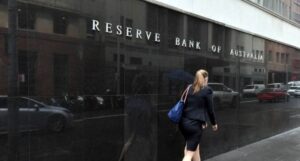RBA Holds Official Rate at 4.1% in July 2023: No relief to Australians.
Today the Reserve Bank of Australia (RBA) made the decision to keep the official cash rate unchanged at 4.1% and the interest rate paid on Exchange Settlement balances to remain at 4.00%. This decision comes amidst the backdrop of evolving market conditions and a global economic landscape that has been marred by rising interest rates. The official cash rate on 06 April 2022 was 0.10%. Twelve months on and it has jumped by 4%. This official rate is nearly the same as it was in April 2012 (4.25%).
Current Market Conditions:
As per ABS March quarter CPI release, the inflation in the Australian economy rose by 1.4%. Overall for the last 12 months from the March 2023 quarter, it headed north by 7.0%. The worst impacted sectors were healthcare, tourism, university education and hydrocarbons (gas and fuel)
The recent outcry by media on lifestyle impact and inability to pay bills by everyday Australians has reached the ears of the RBA team and its outcome is seen in today’s RBA’s decision by Governor Philip Lowe.
Inflation in Australia has passed its peak and the monthly CPI indicator for May showed a further decline. But inflation is still too high and will remain so for some time yet. High inflation makes life difficult for everyone and damages the functioning of the economy. It erodes the value of savings, hurts household budgets, makes it harder for businesses to plan and invest, and worsens income inequality. And if high inflation were to become entrenched in people’s expectations, it would be very costly to reduce later, involving even higher interest rates and a larger rise in unemployment. For these reasons, the Board’s priority is to return inflation to target within a reasonable timeframe.
Reserve Bank of Australia. (2023, July 4).
Statement by Philip Lowe, governor: Monetary policy decision:
Media releases. Reserve Bank of Australia. https://www.rba.gov.au/media-releases/2023/mr-23-16.html
The mining and construction sectors have shown resilience, bolstered by increased infrastructure projects and strong demand for commodities. There are still concerns surrounding the affordable housing market, as property prices have been escalating rapidly. The labor market has also exhibited signs of recovery, with unemployment rates at their lowest in the last 50 years.
However,wage rise and availability of new jobs in the market is pushing inflation further. inflationary pressures and global economic uncertainties have been influencing the decision-making process of the RBA.
The Impact of Rising Interest Rates:
Rising interest rates have shown a significant impact on all aspects of the Australian economy. One of the primary effects is a decrease in consumer spending. As the cost of borrowing increases, individuals and businesses may become more cautious with their expenditure, leading to a slowdown in economic activity. Additionally, higher interest rates can discourage investments, as borrowing becomes more expensive for businesses. This can potentially hamper economic growth and stifle entrepreneurial initiatives.
With the decision to maintain the official rate at 4.1%, the RBA aims to strike a balance between supporting economic growth and managing inflationary pressures. By keeping interest rates stable, the RBA seeks to provide stability and confidence in the financial markets, encouraging borrowing and investment.
This decision is expected to support consumer spending in FMCG, Retail and Tourism sectors, which is a significant driver of the Australian economy. It also provides breathing room for SMB, enabling them to plan for the future, make informed investment decisions and generate local employment.
Moreover, a stable interest rate environment contributes to a robust housing market. It helps moderate the pace of property price growth, making housing more affordable for prospective homebuyers. This, in turn, can promote social stability and address concerns related to housing affordability.
Summary:
The RBA’s decision to keep the official rate unchanged at 4.1% reflects a careful consideration of the current market conditions and the potential impact of rising interest rates on the Australian economy. By maintaining stability in interest rates, the RBA aims to support economic growth, foster consumer spending, and provide a conducive environment for businesses. The decision also helps in managing inflationary pressures and ensures the sustainability of the housing market.
Overall, this move by the RBA is expected to have a positive impact on the Australian economy, promoting stability and laying the foundation for continued growth.
In conclusion, while rising interest rates pose challenges, the RBA’s decision to keep the official rate unchanged at 4.1% demonstrates a proactive approach in managing economic conditions and supporting growth in Australia.
It is just a matter of time when the RBA will take the decision again in future.



